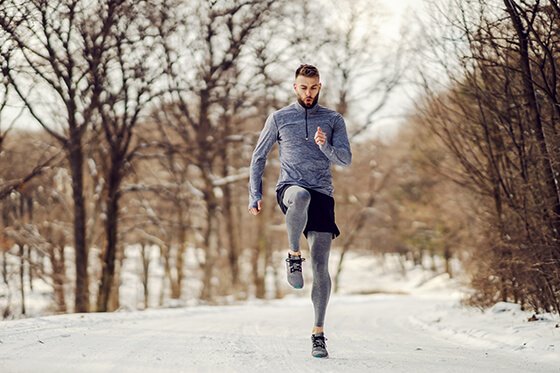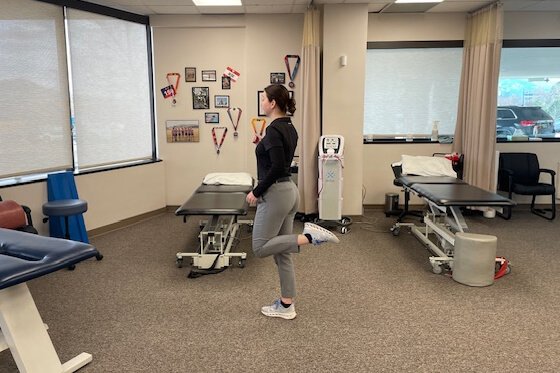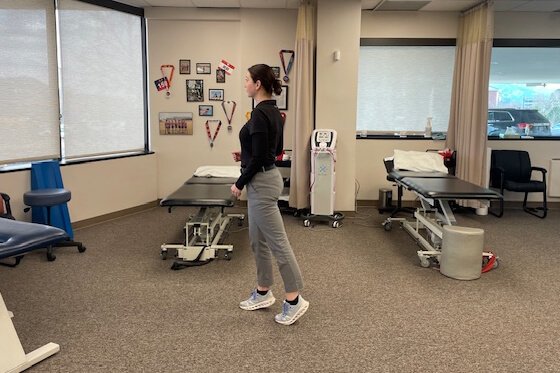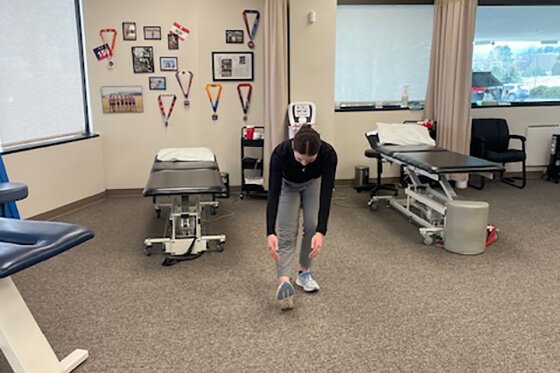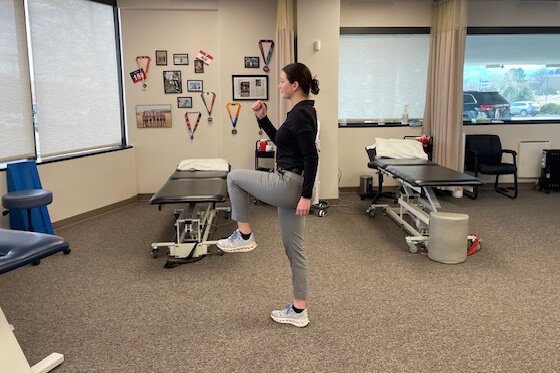Embrace the chill: exercising in winter weather conditions
How to avoid injuries and be safe in winter
Posted 1/31/24
Winter is officially here and so are the fitness fanatics who enjoy exercising in the snow and cold air.
There are athletes who choose to go for a run when it's 20 degrees outside with high winds and avid hikers who climb hills or walk on trails when there’s a couple inches of snow on the ground.
You might think these people are crazy for exercising outside when it’s cold enough to see your breathe, but this may be their way of sticking to a fitness goal — or maybe they just don’t like the traditional gym setting.
A lot of preparation goes into these workouts.
It can be dangerous, but exercising in the cold can also be beneficial for your overall health.
Benefits of exercising outside in the cold
When the temperatures drop, you might be reluctant to trade your tank top for a jacket, opting instead for a blanket and hot cup of coffee. However, there are some unexpected advantages to exercising outside in the winter:
- Escaping dreary weather – Exposure to the sun can help keep your energy and Vitamin D levels up, which can keep the days from dragging and help improve your mood.
- Better mental health – Traditionally, serotonin and endorphin levels are lower at this time of year because of the shorter daylight hours and avoiding the cold by staying cooped up inside. Simply taking your dog for a 30-minute walk can increase your “feel good” levels and ward off seasonal depression.
- Boosting your immune system – Winter is the season of sickness. Cold temperatures cause your blood vessels to constrict, increasing your white blood cell count and improving your body’s ability to fend off illnesses like the common cold, flu, strep throat and COVID-19.
- Improving endurance – Working out in the heat can quickly make you more tired since it increases your heart rate and sweating. Exercising in the cold can help you work out for longer, which can help build your endurance and stamina. Your blood vessels constrict in the cold as your body tries to maintain your core temperature. This causes your heart and lungs to work harder, increasing aerobic capacity.
While there are many benefits to outdoor winter exercise, there is still a need for caution.
What to watch out for
Chilly temperatures bring new hazards and possible injuries to outdoor exercise. We all know to take extra precautions while driving through the snow; we should practice the same prudence before participating in any outdoor activities in the cold air.
Think about it.
Sometimes, just walking to your car can lead to a slip or fall due to ice, resulting in a bruised backside.
It’s a lot more than our backsides, though.
There are many injuries that may occur when you decide to exercise in the cold. These include:
- Quad strains or pulls
- Hamstring tears or pulls
- Calf strains
- Wrist sprains or fractures
- Concussions
- Sunburn or frostbite
Yes, you can still get sunburn in the winter.
Snow reflects UV radiation, which means exposed skin on your face, ears or hands are at risk for sunburn and skin damage, even on cloudy days.
To help avoid these injuries, and an emergency room visit, here are some safety precautions:
- Layer up: Wear moisture-wicking base layers to keep sweat away from your skin, insulating layers for warmth and a waterproof outer layer to protect against wind and rain. You should also make sure you’re wearing gloves, hats and thermal socks to protect against frostbite or hypothermia.
- Wear proper footwear: Wear shoes that are built for ice and snow, or add on external microspikes to the shoe.They should be spiked, get good traction and resist water. The spikes will help secure a foothold on slippery surfaces and can prevent you from getting injured. The water-resistant material can also help keep your feet dry and warm.
- Stay hydrated: It’s easy to forget about drinking water when it’s cold, but staying hydrated is essential for optimal performance. Your body uses water to keep you warm, and the simple of acting of breathing causes moisture loss as you exercise.
- Map out your workout: If you consistently run on a trail, in a neighborhood or on the side of a street, you probably know where the dips in the pavement are or where some base boards on a bridge tend to be a little rickety. It’s important that you map out where you run or walk so you can avoid potential hazards. For example, if a stretch of pavement has a pothole or two, and they’re covered by snow, you probably can’t see them. Making these mental notes and observing your surroundings can help prevent injuries.
One crucial thing to remember is that your body is not providing the necessary warmth to certain muscle groups while you exercise in the cold.
This makes you more susceptible to strains or tears in the winter, especially in your calves, quadriceps or hamstrings.
While your clothing selection can help with this, what can really prepare you for working out in the cold is having a proper warm up that stretches injury-prone areas.
Stretch it out
Now that you know what to watch out for while exercising in the cold, and what types of injuries are possible, let’s discuss how to safely prepare and stretch with warmup and cool down exercises that help prevent injuries.
First, you should layer up with what you will be wearing to exercise to keep your muscles warm. That’s a must before any kind of warmup begins.
A dynamic warmup and stretches before any kind of outside exercise or activity is essential to avoiding injury.
A dynamic warmup involves motion, rather than static stretching, which will boost blood flow and circulation to your muscles, and only takes five minutes to complete.
A “motion” warmup can look something like this:
Standing butt kickers to jogging butt kickers – Can do in place or walking down a hallway. Kick your foot toward your butt and then increase speed to a light jog.
Walking toe raises to bilateral hops – Walk the length of the room raising up on your toes, then progress toward hopping in place.
Walking scoops – Take a step while keeping one leg straight, then bend forward and stretch in front of you toward your heel. Next, step and do the opposite foot. You should feel a pull in the back of your leg.
Walking to jogging high knees — You can do these in place as a static stretch or down a hallway to get your blood pumping. If going at a faster pace, try to get your knees as high as they can go.
Cool down – After you’ve finished your workout, it’s time to cool down your muscles. You can take a small walk around your house or outside — if the cold is bearable. This gives your muscles one last extra stretch and can help prevent soreness and stiffness.
If you want to learn more about dynamic warmups or what stretches work best for you, request an appointment. Our physical therapists can provide the information you need to exercise safely this winter.
Learn about the purpose of physical therapy and how you can be fully equipped to take on a winter weather workout, or find help if you’ve suffered an injury from a slip and fall and want to get rid of those aches and pains, by reaching out to us today.
Remember, safety comes first in weather conditions.


